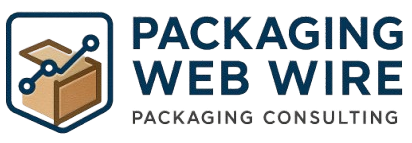The global edible boxes market is poised for remarkable expansion from 2025 to 2034. Driven by rising environmental awareness, increased demand for sustainable packaging, and innovations in food-safe materials, this market is set to reach hundreds of millions in revenue. Edible boxes are emerging as a sustainable packaging alternative that aligns with growing consumer and regulatory demands for eco-friendly solutions.
Market Overview
In 2024, Europe led the edible boxes market, thanks to strong consumer demand, advanced ecological policies, and continuous innovation. However, Asia Pacific is expected to be the fastest-growing region from 2025 to 2034, fueled by rapid urbanization, changing dietary habits, and a growing middle-class population.
Invest in Our Premium Strategic Solution: https://www.towardspackaging.com/download-databook/5644
Key contributors to the market’s growth include the food and beverage industry, pharmaceutical applications, and innovations in materials such as nanotech films. By segment, plant-based sources and polysaccharide materials currently dominate, but animal-based and protein-based options are gaining momentum.
How Artificial Intelligence Is Transforming Edible Packaging
Artificial Intelligence (AI) is making a significant impact on the edible boxes market by enhancing traceability, authenticity, and sustainability. AI technologies are used to track the origin and quality of raw materials, optimize supply chains, and reduce waste. Tools like RFID tags and environmental sensors monitor parameters such as humidity and temperature, ensuring that packaging maintains food safety standards.
By integrating AI into manufacturing and distribution processes, companies can ensure higher quality control, extend shelf life, and offer smarter, more efficient packaging solutions.
Get All the Details in Our Solutions – Access Report Preview: https://www.towardspackaging.com/download-sample/5644
Market Drivers
Rising Awareness of Ecological and Product Safety
As concerns around packaging waste continue to grow, both consumers and businesses are increasingly looking for biodegradable and sustainable options. Edible boxes serve this demand by offering a solution that eliminates landfill waste while preserving food freshness.
This shift is being particularly felt in the pharmaceutical and food & beverage industries, where regulatory and consumer pressure for safer, eco-friendly alternatives is pushing manufacturers to adopt edible packaging.
Market Restraints
High Production Costs and Regulatory Challenges
Despite its benefits, the edible boxes market faces challenges due to the high cost of raw materials and the need for compliance with stringent safety standards. Edible packaging often requires secondary wrapping to prevent contamination, adding to the cost and complexity of production.
Market Opportunities
Growing Demand for Biodegradable Packaging Solutions
Rising consumption of ready-to-eat and processed foods, combined with increased income levels and evolving consumer preferences, presents a strong opportunity for biodegradable packaging. Decomposable films made from polysaccharides, proteins, and lipids are emerging as environmentally safe alternatives to traditional petroleum-based packaging.
As the global population grows and urbanizes, the demand for such sustainable packaging solutions is expected to rise steadily.
Segmental Insights
Plant-Based Sources Leading in 2024
Plant-based edible boxes accounted for the largest revenue share in 2024. The use of algae, seaweed, and other plant-derived materials reflects consumer interest in organic and fully compostable packaging options. These materials are not only safe but decompose completely without harming the environment.
Animal-Based Packaging on the Rise
While still a smaller segment, animal-based packaging is growing rapidly. These materials are especially useful for packaging meats and other high-protein foods, offering benefits such as microbial resistance and moisture control.
Polysaccharide Materials Dominating the Market
Chitosan, starch, and cellulose remain the top polysaccharides used in edible packaging due to their cost-effectiveness and non-toxic nature. These materials are especially favored by the food and beverage industry for their ability to safely preserve food quality.
Protein-Based Packaging Gaining Momentum
Protein-based films made from whey, gelatin, and soy are experiencing fast growth. Their excellent barrier properties help extend the shelf life of food products, making them increasingly popular among manufacturers.
Films and Coatings Continue to Lead
Lightweight and adaptable, edible films and coatings held the highest share in 2024. They can be molded into various shapes, offer excellent sealing, and preserve freshness during transport. Their flexibility makes them ideal for fruits, vegetables, snacks, and bakery items.
If you have any questions, please feel free to contact us at sales@towardspackaging.com
Foams and Cushions Witness Rapid Growth
This segment is expanding due to the increasing demand for packaging that offers enhanced protection. These boxes are especially useful for long-distance food transportation, maintaining product quality over time.
Application Insights
Food and Beverage Industry Leads the Way
The food and beverage segment dominated in 2024, driven by rising demand for packaged and ready-to-eat food items. Consumers’ busy lifestyles are pushing brands to invest in edible packaging that ensures convenience and sustainability.
Pharmaceuticals to See the Fastest Growth
Pharmaceutical applications are forecasted to grow significantly as edible packaging improves medication compliance. Consumers are more likely to take medicines when packaging is easy to consume and doesn’t affect taste or texture.
Recent Developments in the Market
In March 2025, Jake Bullock, CEO of Cann, emphasized the importance of trusted platforms like Edibles.com in reshaping the THC industry and fostering long-term growth. Meanwhile, Edible Arrangements launched a new online marketplace for edible products, highlighting a trend toward diversified ecommerce strategies. In July 2024, they also introduced FreshFruit.com, a subscription service offering premium fresh fruits.
Conclusion
The edible boxes market is undergoing a revolutionary shift. With innovations in materials, increased environmental awareness, and technological integration like AI, this market is set to grow rapidly through 2034. As companies continue to innovate and consumers demand sustainable options, edible packaging will play a key role in shaping the future of eco-friendly commerce.
Source : https://www.towardspackaging.com/insights/edible-boxes-market-sizing


